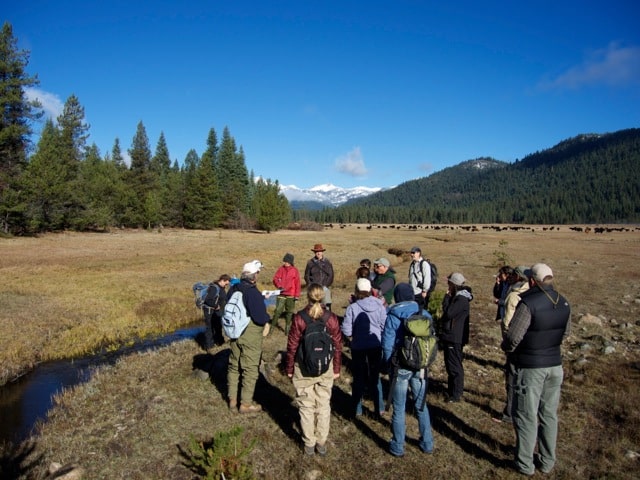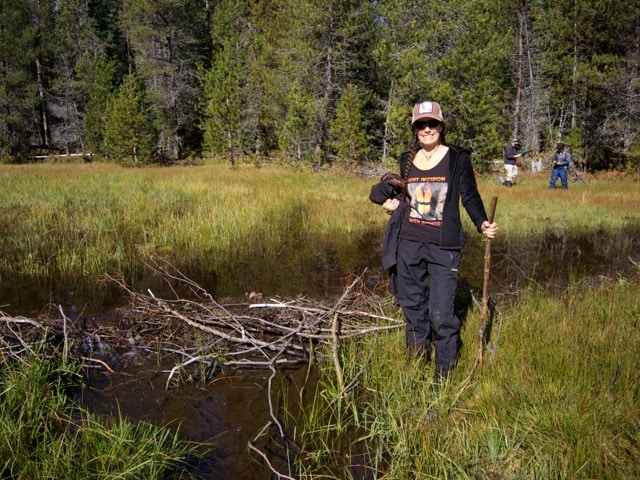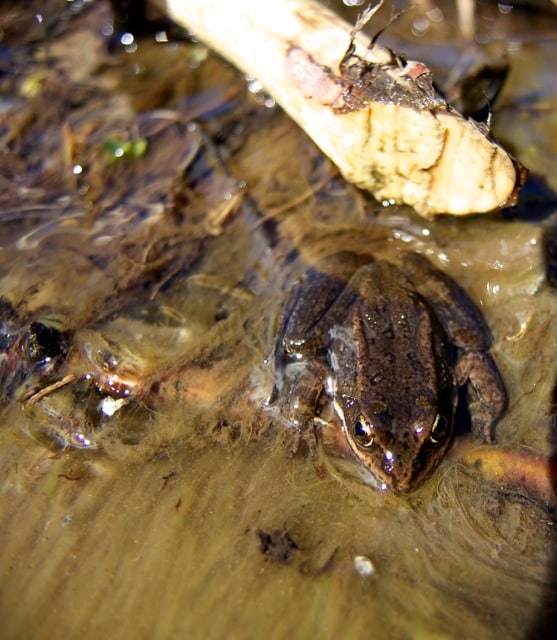In October 2014, The WATER Institute co-convened with The Nature Conservancy a two-day workshop to discuss beaver as a restoration agent (click here to download meeting summary with photos, contacts and PPT slides).
The purpose of this workshop was to bring together a group of scientists and restoration practitioners to discuss approaches to biological and hydrological restoration of meadows, validating the use of beaver as a restoration agent and balancing beaver with livestock grazing. During the workshop, we got to hear from NOAA scientist Dr. Michael Pollock about his extensive research on stream restoration and beaver.
Beaver were not considered native to the Sierra Nevada until research by our colleagues James and Lanman (2012) dated buried beaver dam wood in the Feather River to before the Gold Rush, and WATER Institute research (Lanman et al., 2012) found historic and ethnographic accounts of beaver in other Sierra locations.
Research on beavers in meadows indicates they may have played an important role in meadow formation by storing alluvial sediment, they attract other species by creating new wetland habitat, and their dam building may address channel incision and disconnection between the stream channel and meadow floodplain.
This workshop was a huge success. We had representatives from the US Forest Service, the CA Department of Fish and Wildlife (CDFW), the Central Valley Water Board, The Nature Conservancy (TNC), Trout Unlimited, UC Berkeley, Plumas Corporation, Swift Water Design, and the Scott River Watershed Council. Many of the participants have continued to work on beaver restoration and policy change together and have formed new partnerships and alliances.
The following are successful results of the workshop:
- A letter was drafted and sent to CDFW asking to meet to discuss beaver management in California. A meeting was held, and major input was given to CDFW about how to better steward beaver. This will hopefully be integrated into the white paper the Department is drafting.
- Child’s Meadow was deemed an appropriate location to conduct research on the effects of beaver restoration on meadows. A proposal by UC Davis and TNC to conduct this research was submitted to CDFW and was granted an award in 2015. This study, the first of its kind in California, will investigate the carbon sequestration and biodiversity benefits of beaver and beaver dam analogue restoration techniques.
- Researchers from the US Forest Service Pacific South West Research Station were granted permission to survey the meadow for Cascade Frog and discovered 4 adults, 2 sub-adults, and 42 metamorphs were found in the beaver wetlands (see photo below). These frogs are in decline, and it is more common to see them in groups of 10 or fewer.








